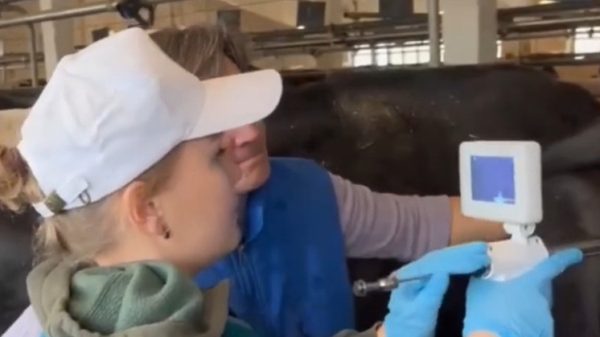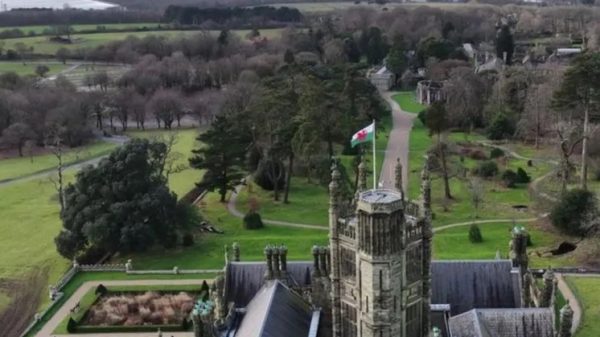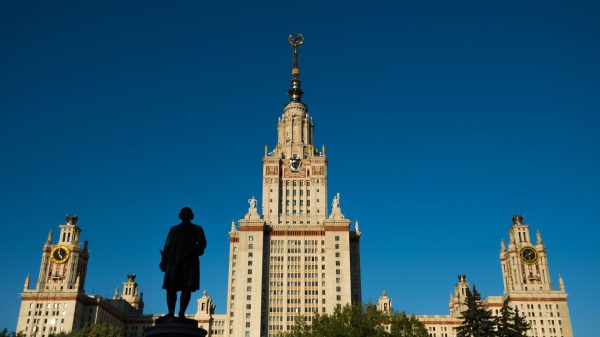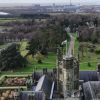Biocrusts protect China's main attraction from air, water and wind
rammed sections of the Great Wall of China, built by compacting natural materials with soil, were considered a weak point in its structure. But as a new study shows, these sections of the iconic Middle Kingdom landmark have created a natural line of defense against the looming risk of deterioration.

According to soil ecologist Matthew Bowker, co-author of the study published in the journal Science Advances, these soil surfaces on the Great Wall of China are covered with a “living skin” of tiny, rootless plants and microorganisms known as biocrusts, which are source of sustainability of a cultural heritage site.
“Biocrusts are found throughout the world in soils in arid regions, but we don't typically look for them in human-built structures,” says Bowker, an assistant professor at Northern Arizona University.
Past research has shown that bioremediation of lichens and mosses poses a destructive threat to modern heritage stone structures due to the long-term effects of microbial communities on aesthetic value, production of acids and other metabolites, and alteration of the microenvironment, which can cause erosion and weathering of rocks. These findings, CNN notes, led to the removal of plants growing on the upper parts of the Great Wall of China. But the effects of bioremediation on landmarks look different, and communities of cyanobacteria and moss actually improve the Great Wall's resilience and make it more resistant to erosion, a new paper finds.
Examining samples taken from more than 483 kilometers of eight rammed earth plots at a site built during the Ming Dynasty between 1368 and 1644, the study authors found that more than two-thirds of the area was covered in biocrusts. When the researchers compared the stability and strength of samples covered with a layer of biocrustation with samples without the “living skin of the Earth,” they found that samples with biocrustation were three times stronger than those without it.
“They thought this type of vegetation was destroying the Great Wall of China. Our results show the opposite,” said study co-author Bo Xiao, a professor of soil science at China Agricultural University. “Biocrusts are very widespread on the Great Wall of China, and their existence is very useful for its protection.”
Biocrusts, consisting of components such as cyanobacteria, algae, moss, fungi and lichens, live in the top layer of soil. dry lands. Occupying an estimated 12% of the planet's surface, communities of tiny plants and microorganisms can take decades or longer to evolve. Forming miniature ecosystems, biocrusts stabilize soil, increase water retention, and regulate nitrogen and carbon fixation.
They're able to do this in part because of dense biomass, which under certain conditions acts as an «anti-infiltration layer» for soil pores, as well as the natural absorption of nutrients that contribute to salt damage, CNN tells CNN. According to the new study, exudates and structural layers of biocorrection also intertwine to form a “sticky network” of aggregating soil particles that contribute to strength and resistance to the corrosive effects that threaten the Great Wall of China.
By forming miniature ecosystems, biocrusts stabilize soil , increase water retention and regulate nitrogen and carbon fixation.
Researchers found that climate conditions, type of structure and type of biocorrosion all play a role in the protective function of biocorrosion, with the reduction in deterioration being “much greater” than the risk of weathering.
Compared to bare rammed earth, sections of the Great Wall covered with biocorrosion of cyanobacteria, mosses and lichens showed reductions in porosity, water holding capacity, erodibility and salinity by up to 48%, while increasing compressive strength, penetration resistance, shear strength and aggregate stability by up to 321%. Of the entire group, the biocorpus of moss turned out to be the most stable.
“The biocorpus covers the Great Wall of China like a blanket that separates the Great Wall of China from the air, from the water, from the wind,” says Professor Xiao.
< p>He noted that the biohull, which retains water and prevents salt buildup, resists chemical weathering by producing substances that act as a “glue” to bind soil particles together against dispersion, enhancing soil properties.
Most communities that make up a biobush start with a single organism that grows and makes the environment in which it grows suitable for others, CNN says. Although they are still vulnerable to the effects of climate change, these constantly evolving organisms are expected to employ internal mechanisms to adapt to future extreme events, said Emmanuel Salifu, an assistant professor at Arizona State University.
This innate adaptability is what Salifu says. makes biocrusts an excellent candidate for conservation efforts to address the challenge of maintaining structure in our warming world.
“Even if we have higher temperatures, they are already adapted to work in these conditions,” says the expert. “We expect they can survive better if we engineer their massive growth.”
Wind erosion, rain erosion, salinity and freeze-thaw cycles have caused cracking and disintegration across thousands of miles of structures connecting The Great Wall of China, which is subject to serious wear and tear and is vulnerable to collapse. Rising temperatures and increased precipitation can also lead to a decrease in the wall's bio-coverage.
The study authors say their work provides a rationale for exploring the possibility of cultivating bioresin to help preserve other World Heritage sites.
The construction industry as a whole remains divided over the historical conservation potential of bioresorts, Salifou said.< /p>
“The generally accepted idea is that biological growth is harmful to structures. It affects the aesthetics, it causes degradation, it affects the overall structural integrity,” he said. However, there is a lack of specific research to support these findings, Salifu added, noting that “the jury is still out on this.”
Salifu sees the new study as evidence of the potential benefits of creating bioremedies for the conservation of earthen heritage sites, although this field is still in its infancy. The study establishes that natural communities of plants and microorganisms “have the ability to improve the structural integrity, durability of earthen structures such as the Great Wall of China,” Salifu said.
In addition to its status as a tourist destination attracting millions, Xiao said visitors every year, the Great Wall has great cultural significance, which is why bioremediation preserving it is so important.
“The Great Wall is the cultural center of Chinese civilization,” he told CNN. “We must do everything we can to protect it for our next generations. For our children, for our grandchildren.”


























































Свежие комментарии